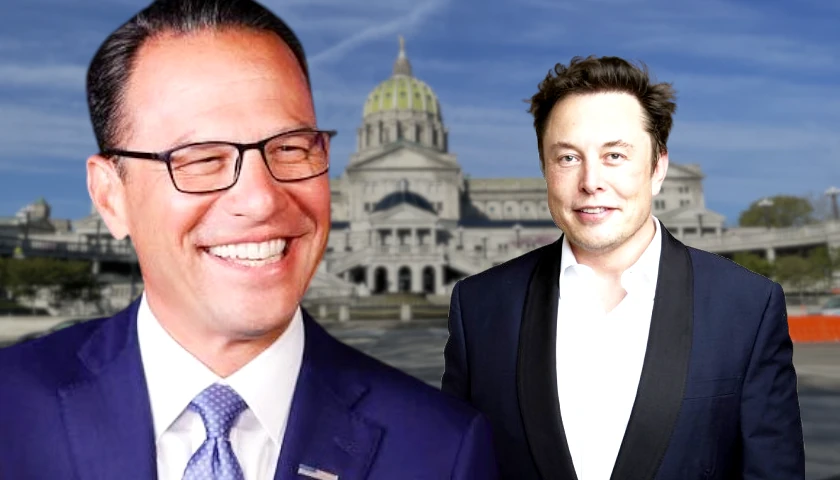Pennsylvania Department of Labor & Industry (L&I) officials testified before state senators Tuesday, requesting an increase in the department’s budget as well as a hike in the commonwealth’s minimum wage.
Democratic Governor Josh Shapiro’s Fiscal Year 2023-24 spending proposal envisions an 11.4 percent rise in L&I’s allocation to $89.8 million. The agency’s acting secretary Nancy Walker also asked lawmakers to consider backing the governor’s goal to raise the Keystone State’s legal wage floor to $15 per hour.
“I think it’s the right economic and moral thing to do,” she told Pennsylvania Senate Appropriations Committee members.
Pennsylvania’s minimum hourly wage last went up in 2009 to $7.25, which matches the current federal legal wage floor. Thirty states and the District of Columbia currently enforce higher wage requirements.
Walker (pictured above) suggested an increase of $15 per hour would affect 945,000 Pennsylvania workers. According to a report by the state’s Minimum Wage Advisory Board, he number of employees in the commonwealth earning $7.25 per hour or less in 2021 was 63,800 or two percent of the Pennsylvania workforce. Walker added that about 49 percent of this demographic works in the food-service industry.
Critics of a minimum wage hike often note not only the relatively small number of state residents at that income level but also the fact that many of those residents are teenagers working one of their first jobs.
When pressed by State Senator Tracy Pennycuick (R-Red Hill), Walker could not name any actual employers that still pay any employees $7.25 on an hourly basis, reflecting the reality that most workers require higher wages irrespective of any government mandate. The secretary also could not immediately provide an age breakdown of the nearly 1 million Pennsylvanians who would ostensibly benefit from a wage-floor increase.
“I have an apprentice that works in our family business and he started at $15 an hour,” Pennycuick said. “So, I have yet to find a job that’s really offering $7.25 an hour; I have such a difficult time believing that it actually exists out there. And if it does, do you take into consideration that maybe it’s the first job for a high-schooler flipping burgers — which is paying $17 an hour in my hometown — or if they’re at Target they’re making $25 an hour?”
State Senator Vincent Hughes (D-Philadelphia) spoke in favor of raising the minimum wage, averring that neighboring states except for Delaware have higher minimum wages than Pennsylvania’s $7.25 as well as lower levels of unemployment than Pennsylvania’s 4.4 percent. (Delaware’s minimum wage is $11.75 per hour, and its jobless rate is 4.6 percent.)
Hughes insisted that the Keystone State renders itself less economically competitive by failing to raise its artificial wage floor. Walker concurred, though neither explained why employers who wanted to attract workers would not raise their pay offerings to the extent they could.
Appropriations Chairman Scott Martin (R-Strasburg) voiced skepticism about raising the minimum wage, noting that the food-service industry has struggled significantly in the wake of restrictions imposed during the COVID-19 pandemic.
“If that’s truly where the heart of where most people claim lower wages are, is that worth sacrificing potential job losses as well if there’re entities that cannot carry [the mandate]?” he said.
Economists largely agree that government-imposed wage floors compromise employers’ ability to hire. Even left-wing Princeton economist and New York Times columnist Paul Krugman panned the idea in 1998.
“So what are the effects of increasing minimum wages?” Krugman wrote. “Any Econ 101 student can tell you the answer: The higher wage reduces the quantity of labor demanded, and hence leads to unemployment.”
Advocates of minimum wage rises sometimes acknowledge that their preferred policy comes at an eventual cost. While explaining the rationale for a $15-per-hour minimum wage, no less a wage-floor advocate than Service Employees International Union organizer Kendall Fellis admitted, “$20 was too high.”
In 2015, the nonprofit Employment Policies Institute surveyed U.S.-based economists on the effects of raising the minimum wage to $15 per hour. Seventy-two percent of respondents said they opposed the idea.
The same poll found 76 percent of economists expected such a hike to lessen the availability of jobs. The survey also discovered 83 percent of economists believed that the policy would negatively affect youth employment and 52 percent believed it would be detrimental to adult employment.
– – –
Bradley Vasoli is managing editor of The Pennsylvania Daily Star. Follow Brad on Twitter at @BVasoli. Email tips to [email protected].
Photo “Nancy Walker” by Pennsylvania Department of Labor & Industry. Background Photo “Pennsylvania State Capitol” by Ad Meskens. CC BY-SA 3.0.





